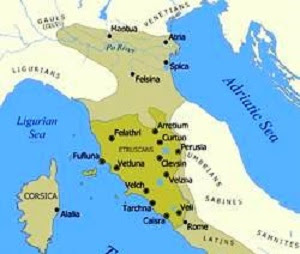Vico Bolsena and Bracciano
Rome the Capital of
Italy is a trip inside the contemporary reality of the eternal
city, visiting 20th and 21st century sites and museums. A
journey that begins with the Rationalist style of the EUR and Foro Italico
districts, through the working-class areas of Garbatella, Quarticciolo and
Pigneto from the twenties and thirties, as well as newer architectural
challenges such as Renzo Piano’s Auditorium and Richard Meier’s Dives in
Misericordia Church. Just
a few kilometers outside the city you can go boating, windsurfing or canoeing
on volcanic lakes, walk or bike in the colorful countryside, taste unique
typical foods and experience the history, traditions and ancient culture among
Etruscan ruins and in medieval castles.
The Lakes
Vico as with most lakes in this
region Lake Vico is of volcanic origin; it is surrounded by cane fields and is
horseshoe shaped. Mount Venere is 800 meters high, with several walking and
biking trails. At the "well of the devil" - a semi-vertical grotto –
there is a great view of the entire lake. Watch out for foxes and wild boar! The coastline is great for bird watching, cycling and water sports - windsurfing, sailing and
canoeing. Overlooking Lake Vico is Caprarola
with a XVI Century Farnese Palace; the Sagra
della nocciola occurs here at the end of August; an opportunity to taste
local chestnut based specialties, sweets and ice cream.
the best way to travel is in the company of people who live and
work in the places you visit. So, if you are planning a vacation or business
trip contact us for a no obligation
travel itinerary.
We
don’t just sell you a travel plan; we experience it with you!
Bolsena on the border of Lazio and
Umbria, and between Viterbo and Orvieto, Bolsena is the largest volcanic lake
in Europe. Excellent for water sports, it has English style gardens on Bisentina
island and wild nature on Martana Island. Spend time on one of the local
fishing boats or cruise aboard a traditional Bolsena Lake boat, day or night. Food
lovers will enjoy a vast assortment of restaurants along the coast specializing
in local fish, rigorously accompanied by Bolsena area olive oil and wines.
A most Intriguing Trail is Sentiero dei Briganti
used by Smugglers and Outlaws
Bracciano This lake is located further south, between Rome and
Viterbo provinces and close to the Lazio beaches. The three major communities
around the lake are the city of Bracciano, Anguillara Sabazia e Trevignano Romano. Overlooking
the lake is the Orsini Odescalchi castle, famous for vip weddings; this 15th
century structure is also a museum. Nearby is the Air Force Museum with over 60
planes, motors and other equipment.
Your Connection to Rome and the Lakes in Lazio Region
Travel
Destinations Management Services
tema@arezza.net | skype arezza1
Information and Reservation
Travel
Duration 3 nights and 4 days. Group Size
Minimum 4, Maximum 50 persons.
Cost/Person/Day
Euro 245 for adults age 19 to 64 Euro
195 for seniors 65+ and children under 18.
Information
for Booking First and Last Name, Passport
Number, Expiration date and Issuing country, Date of birth, Email address.
Included
Travel
between cities and states that are part of the itinerary, lunches and dinners,
accommodations in double occupancy with breakfast for three nights, applicable
local and state taxes, one-half day sightseeing events, local transport
services.
Excluded
Evening
entertainment and transport to tour location start and from tour ending
location.
Day/time Day to day programs and specific events at each
location, as well as the sequence of the tour stops, will be finalized with the
participation of the clients after details on family/group composition have
been determined to take-into-account client priorities and preferences.
Reductions Children under the age of
18 and seniors over the age of 65 traveling with parents and/or guardians,
staying in the same hotel room receive a 20 percent discount.












